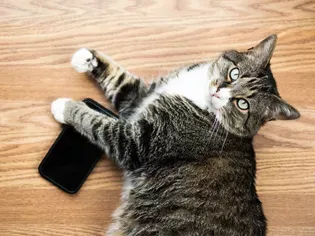Why Cats Get Jealous and How to Stop It
Updated on 05/26/24

Unveiling the Green-Eyed Monster in Cats: Why They Get Jealous and How to Tame Their Envy
Introduction
The enigmatic feline companions that grace our lives with their charm and affection can sometimes exhibit a peculiar behavior: jealousy. This seemingly irrational emotion can manifest in a range of behaviors, from subtle passive-aggressive actions to outright aggression. Understanding the underlying causes of feline jealousy and implementing effective strategies to mitigate it is crucial for fostering harmonious relationships between cats and their human caregivers.
Decoding the Roots of Feline Jealousy
The genesis of jealousy in cats can be attributed to a combination of factors, including:
1. Territorial Instincts: Cats are inherently territorial creatures, and they view their home environment as their domain. Introducing a new pet or person into the household can disrupt their established social hierarchy and trigger feelings of insecurity.
2. Resource Competition: Food, water, attention, and other essential resources can become objects of envy among cats. When resources are perceived as scarce, cats may resort to aggressive or possessive behaviors to secure their share.
3. Lack of Attention: Cats crave affection and attention from their human companions. If they feel that their attention is being diverted towards a new person or pet, they may become jealous and act out.
4. Past Experiences: Cats who have experienced negative interactions with other pets or people in the past may develop a predisposition towards jealousy. These experiences can instill a sense of fear or distrust, leading to protective or aggressive behaviors.
Examples of Jealous Cat Behaviors
Jealous cats may display a range of behaviors, including:
* Blocking access to resources: Standing in front of food bowls, blocking doorways, or perching on top of toys to prevent others from using them.
* Vocalizations: Hissing, growling, or meowing excessively to express disapproval or assert dominance.
* Aggression: Attacking or chasing other pets or people perceived as threats.
* Elimination outside the litter box: Deliberately spraying urine or defecating in inappropriate areas to mark their territory.
* Tail twitching: Rapid or persistent tail twitching can indicate anxiety, stress, or impending aggression.
Effective Strategies to Tame Feline Envy
Addressing feline jealousy effectively requires a multifaceted approach that includes:
1. Providing Ample Resources: Ensure that all cats have access to sufficient food, water, toys, and litter boxes to minimize competition and resource guarding.
2. Distributing Attention Equitably: Dedicate quality time and affection to each cat индивидуально, ensuring that they feel equally loved and valued.
3. Gradual Introductions: When introducing new pets or people to the household, do so gradually and supervised. Allow cats to acclimate to each other's presence and scents slowly, providing positive reinforcement for calm and friendly behaviors.
4. Managing Territoriality: Establish clear boundaries and routines for cats in the household. Avoid allowing them to monopolize certain areas or resources.
5. Positive Reinforcement: Reward cats for exhibiting desired behaviors, such as sharing resources or interacting calmly with other pets. This reinforces positive associations and encourages cooperation.
6. Addressing Underlying Anxiety: If jealousy is severe or persistent, consider consulting with a veterinarian or animal behaviorist to rule out any underlying medical or behavioral issues that may be contributing to the problem.
Conclusion
Understanding why cats get jealous and implementing effective strategies to address it is essential for maintaining harmonious multi-cat households. By recognizing the underlying causes and implementing targeted interventions, we can help our feline companions overcome their green-eyed tendencies and foster a peaceful and loving environment where all cats feel secure and valued. Remember, patience, consistency, and a nurturing approach are key to successfully taming feline jealousy and ensuring a happy and harmonious coexistence for all.
Explore More Pets

Cat Behavior Problems
How to Stop Aggression in Kittens

Long-Haired Cat Breeds
Siberian Cat: Breed Profile, Characteristics, & Care

Cat Behavior Problems
How to Stop Kittens From Scratching and Biting

Long-Haired Cat Breeds
Turkish Angora: Cat Breed Profile, Characteristics & Care

Basic Training
How to Socialize Your Kitten

Short-Haired Cat Breeds
Cute Pictures & Facts About Calico Cats & Kittens

Litter Box Training
Training Your Kitten to Use the Litter Box

Long-Haired Cat Breeds
10 Fun Facts About White Cats
